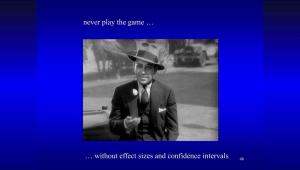Understanding Statistical Tests, Effect Sizes, and Confidence Intervals
This lecture introduces the fundamental principles of statistical testing and their biometric interpretation in clinical research. Starting from simple illustrative examples such as coin flipping, participants will explore the concept of the null hypothesis, p-values, and the logic of hypothesis testing. The lecture then expands to discuss effect sizes and confidence intervals, explaining why these parameters provide more informative insights than p-values alone.
Through practical examples and regulatory references (CONSORT, ICH, FDA), students will learn how to interpret statistical outcomes correctly in superiority and non-inferiority trials, and how to avoid common pitfalls in statistical reasoning and reporting.
Learning objectives
By the end of this lecture, students will be able to:
- Explain the principles of hypothesis testing and p-values.
- Differentiate between statistical significance and clinical relevance.
- Interpret effect sizes and confidence intervals in clinical studies.
- Apply correct statistical reasoning in line with CONSORT and regulatory standards.
- Null hypothesis, statistical tests, and p-values.
- Effect sizes and confidence intervals – definition and interpretation.
- Common errors and traps in data interpretation.
- Application in superiority and non-inferiority trials.
- Regulatory perspectives: CONSORT, ICH, and FDA requirements.



